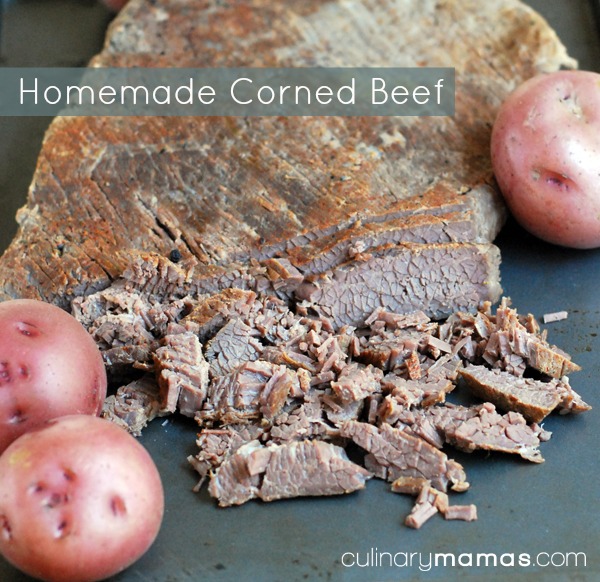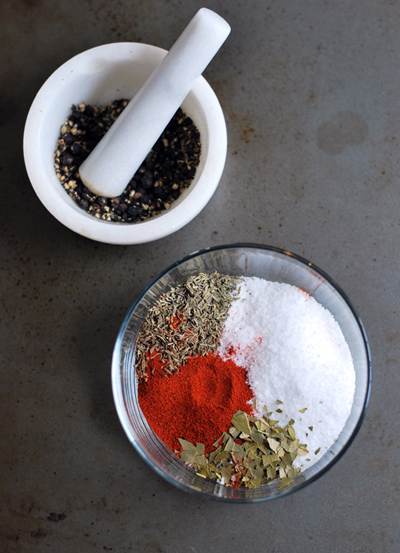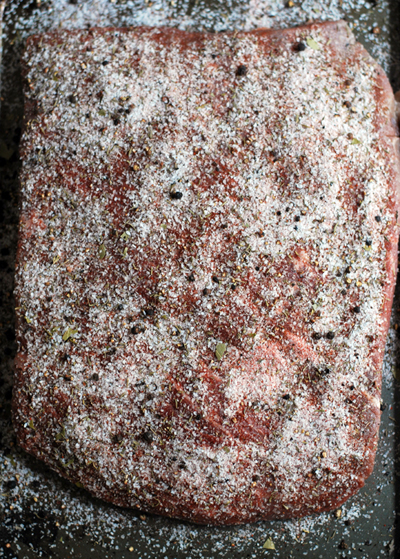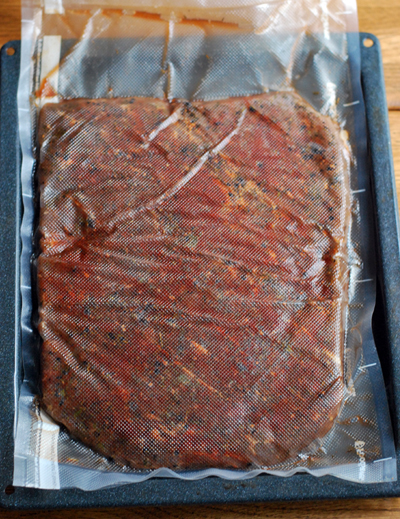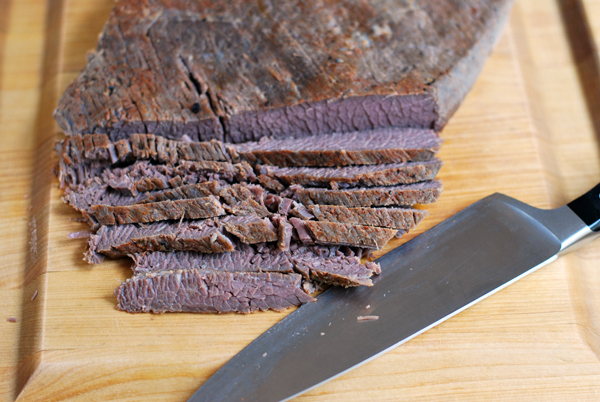
I love corned beef! Maybe it’s because my maiden name is Fogerty and one of my ears is pointy like a leprechaun’s. Maybe I love it because I’m from Chicago and I share the pride of the Irish with half of the city. Or, just maybe I succumb annually to the March marketing for all things green and Guinness in the grocery stores. Either way I always get excited when I see corned beef come out on the grocery store display. Now, we all know St. Patty’s Day is tradition only in North America, but not in Ireland. Traditionally, corned beef is not Irish either. It was part of a New England boiled dinner, an immigrant variation on an authentically Irish meal of bacon and cabbage.
This year I made my own homemade corned beef. I know you’re saying, “I make homemade corned beef, I buy the meat and boil it”. Well that’s just half of the cooking process that makes the beef so tender and flavorful. I found in my Cooks Illustrated Cookbook a very easy method for making it and the outcome is so much better than what you can buy in the stores. We enjoyed the meatier flavor, the tenderness and distinct seasoning. This is a recipe worth having year round. Especially if you crave a good Reuben sandwich.
Lately I’ve become bothered by the amount of salt and the unnatural pink color of corned beef and other meats in the stores. Much of the corned beef sold in stores contains numerous preservatives. Sodium nitrate, “pink salt”, is the main preservative which gives corned beef its distinctive color. It’s a man-made product that helps keep up the shelf life of many processed meats, like sausage and lunch meat. There’s much debate about it and now you can see more products available and marketed without the preservative. Corning meat was originally done with just salt which is completely safe to do in your own home as well. Be sure to notice that my meat is not pink because I omitted using sodium nitrate, but rather it looks like beef. Corned beef can tend to be pretty fatty as well. It’s based on what cut of brisket you choose. If you prefer it to be leaner choose the flat-cut verses the thicker point-cut.
This week on Culinary Mamas we’ll be featuring 4 recipes that will make your St. Patrick’s Day. Whether you have a pointy leprechaun ear or not please come back and visit us for more tasty recipes.
1/2 cup kosher salt
1 tablespoon black peppercorns, cracked
1 tablespoon dried thyme
2 1/4 teaspoons ground allspice
1 1/2 teaspoons paprika
2 bay leaves, crumbled
1 (4 to 6 pound) beef brisket, preferably point cut, trimmed, rinsed, and patted dry
1. Combine salt, peppercorns, thyme, allspice, paprika, and bay leaves in a small bowl. Poke brisket about 30 times per side evenly with salt mixture with a fork or metal skewer. Rub each side evenly with salt mixture; place in a 2-gallon zipper-lock bag, forcing out as much air as possible. If you have a food saver, the large bags should fit the piece of meat. Place in a pan large enough to lay flat, cover with a second pan and weight it with 2 bricks or heavy cans. Refrigerate it for 5 to 7 days, turning once a day.
2. Rinse brisket and pat it dry. Place it in a large stockpot, add water to cover, and bring to boil. Cover and simmer until skewer inserted in thickest part of brisket slides out easily out easily, 2 to 3 hours.
Now you can choose between two routes completing this meal.
First choice: Place the boiled corned beef in a pan, cover with one cup of broth , cover with aluminum foil and place it in a 200° oven to keep warm. Bring the broth back to a boil and add small red potatoes (scrubbed and whole). Cook them for about 10 minutes, before adding green cabbage (1 small head un-cored and cut into 6 to 8 wedges) and cooking an additional 10-15 minutes longer. Remove all the vegetables and serve with the meat.
Second choice: Add just the small red potatoes (scrubbed and whole). Boil 20 minutes until tender. Serve topped with parsley and butter. As an alternative to boiled cabbage try roasted cabbage. And guess what – the recipe will be coming your way in our next post tomorrow! If you already have not done so please sign up to subscribe via email in the right hand column and/or follow us on Facebook/Pinterest/Twitter.
- ½ cup kosher salt
- 1 tablespoon black peppercorns, cracked
- 1 tablespoon dried thyme
- 2¼ teaspoons ground allspice
- 1½ teaspoons paprika
- 2 bay leaves, crumbled
- 1 (4 to 6 pound) beef brisket, preferably point cut, trimmed, rinsed, and patted dry
- Combine salt, peppercorns, thyme, allspice, paprika, and bay leaves in a small bowl. Poke brisket about 30 times per side evenly with salt mixture with a fork or metal skewer. Rub each side evenly with salt mixture; place in a 2-gallon zipper-lock bag, forcing out as much air as possible. If you have a food saver, the large bags should fit the piece of meat. Place in a pan large enough to lay flat, cover with a second pan and weight it with 2 bricks or heavy cans. Refrigerate it for 5 to 7 days, turning once a day.
- Rinse brisket and pat it dry. Place it in a large stockpot, add water to cover, and bring to boil. Cover and simmer until skewer inserted in thickest part of brisket slides out easily out easily, 2 to 3 hours.

